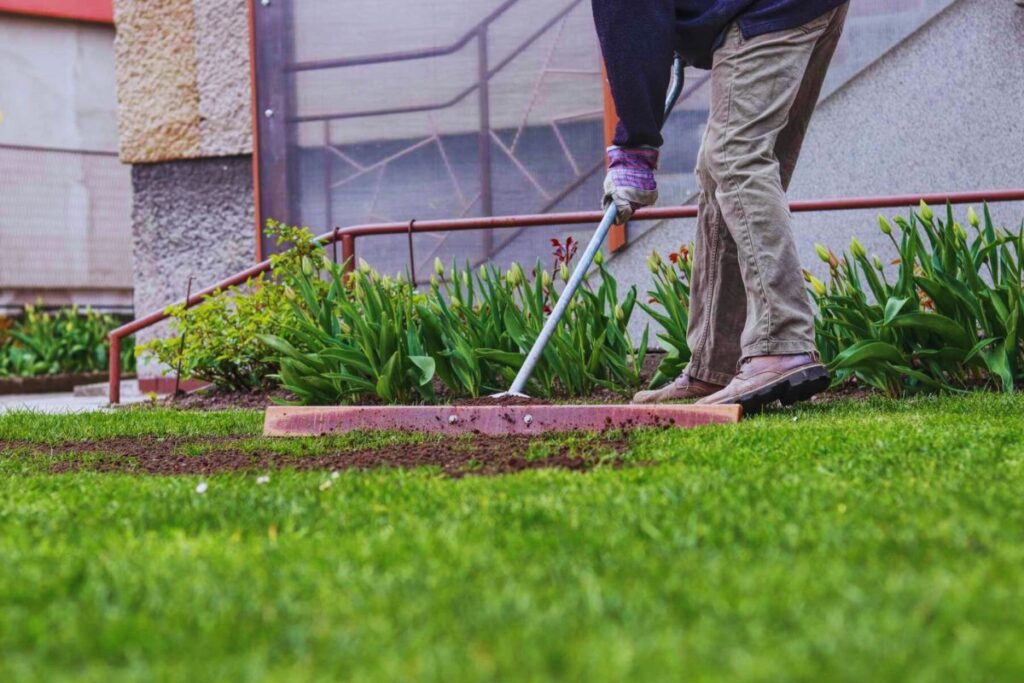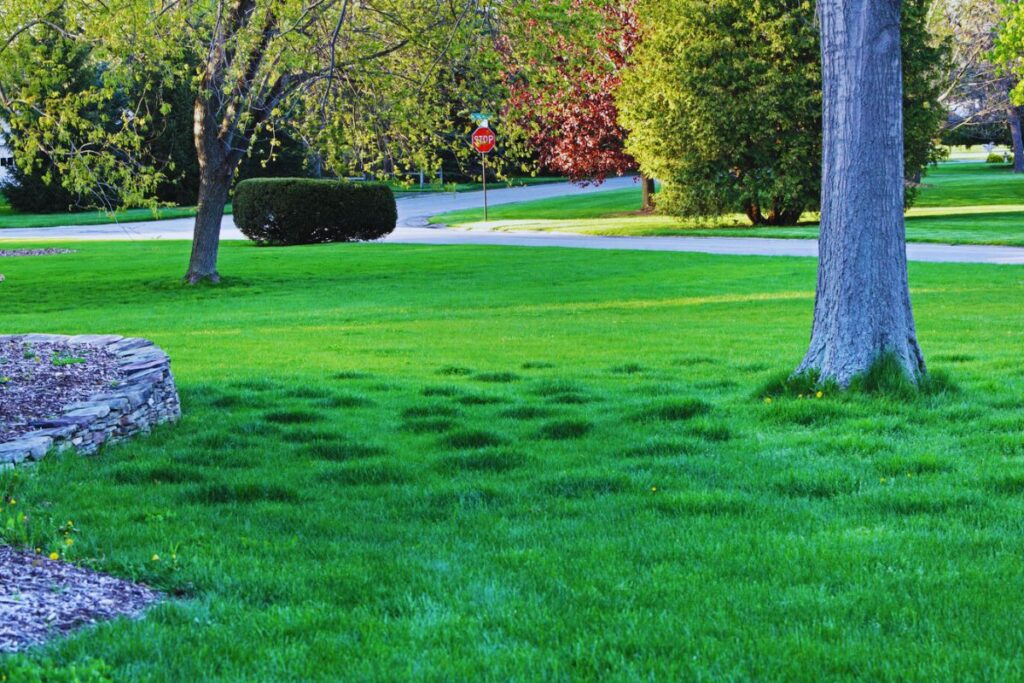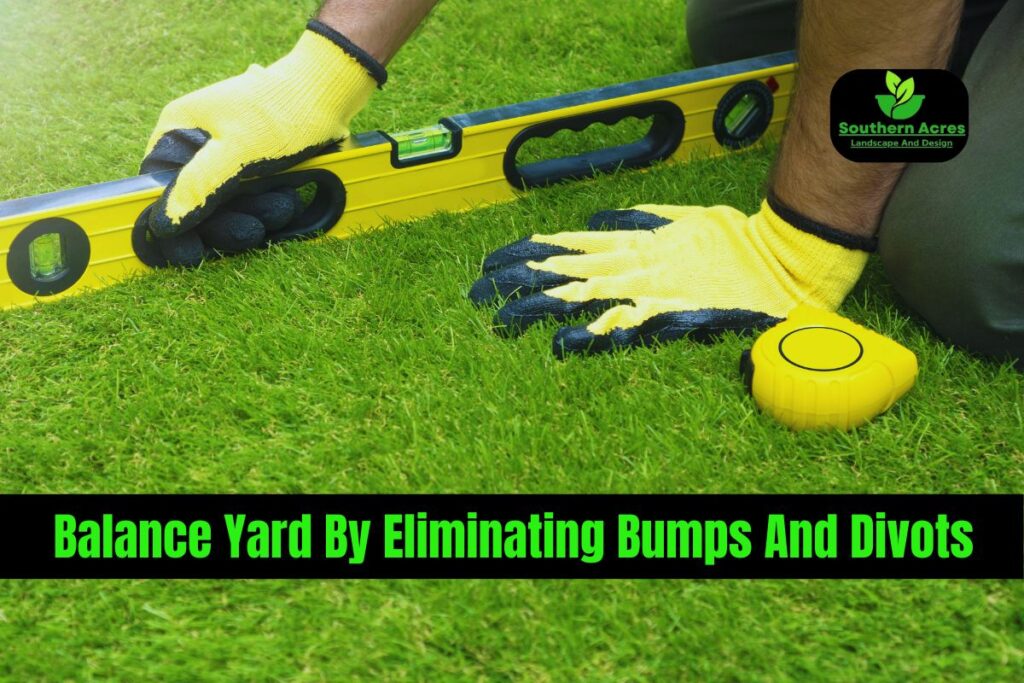A yard is best for playing games, hosting a barbecue, or easily relaxing in the heat of the sun. However, it also has a essential role when it comes to drainage. If a yard is not graded properly or correctly, water from rain and melting snow may flow back toward the home’s foundation, where it can cause damage to the concrete and seep through the walls into the basement.
Keep this thing in mind, it’s important to ensure a yard is level to secure your home. Additionally, poor leveling can leads to damage of gardens, trees, and landscaping. Divots and dents can leads to stagnant, an ideal location for mosquitoes and other pests to reproduce. Avoid these problems by learning how to level a yard with this straightforward guide.
Importance of Having a Balanced Yard
Balancing the yard might not seem like a pressing concepts, but if the yard remains non parallel in places or slopes back toward the house, it can lead to serious concerns, like flooding or foundation damage. Likewise, holes, bumps, and divots in the yard affect how the lawn appears and can destroy the gardens, trees, and landscaping.
An uneven yard can cause standing water issues and pest problems and avoid the appearance of new sewer lines, water lines, or a pool. It can also affect the lawn’s health so it’s necessary to take action to correct minor leveling issues before standing water and soil erosion can make the problem more challenging to resolve.
How to Test If a Yard Is Parallel
In many cases, only you have to look outside the window won’t be sufficient to tell that the yard is okay or there are holes, divots, dips or pits other issues. Although stagnant water is a quick indicator of a problem, this sign isn’t always there. Landlords can analyze the yard’s grade using a hammer, a level, two 3-foot wooden stakes, and around 100 feet of string.
Initialize at the house and drive one stake around a foot into the soil. Then, measure 100 feet far from the house and drive the next stake a foot into the soil. Knot the string to the first stake at ground level and run the string to the second stake. Use a level to ensure the string is level and tie it to the another second stake. Calculate the distance from the string to the ground.
Ideally, the ground will have a slight slope away from the house measuring about 1/4-inch in depth per foot, which comes to about 2 feet in depth per 100 feet from the house. Yard unbalance can range from mild to severe, so prior trying to level the yard, it’s a good idea to identify the level of the issue.
- Mild unevenness:-In this there are shallow depressions or bumps with less spots that are generally less than 1 inch in deepness. This problem is relatively simple to solve by rectifying the lawn with a topdressing mix to even out the yard.
- Moderate unevenness:- It depicts the the yard carries many tiny divots and depressions, including bumps or pits measuring 1 to 3 inches. Fixing a moderately unapparelled yard is more complex but not beyond the ability of the average DIYer. Integrate the grass in affected areas and add or remove soil as needed. Then, treat the lawn with a topdressing mix and use a rake to make the yard level.
- Severe unevenness:- It occurs when there are substantial grading concerns with the yard—depressions and bumps that often crossed 3 inches in height or depth. Generally, it’s best to hire a group of landscaping professionals to level a severely unorganized yard since it may require excavation, regrading, sod replacement, or reseeding.

Before Leveling the Yard
It’s important to plan the correct time to level the yard. Go for level the yard when there is a excessive rain or other precipitation causes the risk of soil erosion. Also, if you decide to level the yard in the summer’s middle or the starting of winter, new seed face difficulty in growing. The ideal time of the year to level the yard is late spring or early fall.
To determine the soil tip, go for soil test kit, which helps when making mind on good topsoil mixture. For soil with high clay content, use organic mulch or elements only. A topsoil and compost mixture should suffice if the soil is loamy, fine, and soft. Other soil types can be examine with a mixture of sand, topsoil and compost.
Water the yard to little bit dampen the soil initial trying to level the yard, making it simpler to lift and manipulate the soil with a shovel or rake. Also, prep the yard by mowing the lawn and using a thatch rake or dethatches to eliminate the thatch. After the thatch has been removed, you can start leveling the yard.
What Are The Requirements?
Equipment / Tools/Material
- Shovel
- Wheelbarrow
- Rake
- Push broom
- Garden hose
- Lawn sprinkler
- Sand
- Topsoil
- Compost
- Grass seed
Steps to Be Followed
Create a topdressing mix:
Before commencing the leveling process, ensure the lawn is mowed and dethatched, and lightly moisten the soil. Then, prepare a topdressing mix suitable for your soil type:
For soil high in clay content, use compost exclusively.
Loamy, fine, and soft soil requires an even mix of topsoil and compost.
Other soil types benefit from a balanced blend of topsoil, sand, and compost.
Lift Sod in Problem Areas:
Identify low spots deeper than 1 inch or bumps higher than 1 inch and lift the soil to address the issue. Use a shovel to cut through the sod, ensuring it reaches about 2 to 3 inches below the surface.
Carefully pry up the soil to expose the underlying depression or bump.
Fill Holes and Smooth Bumps:
Utilize the topdressing mix to fill holes and level the yard. To address bumps, use a shovel or leveling rake to remove excess soil, storing it in a wheelbarrow for potential use elsewhere.
Adjust the slope around the house by adding the topdressing mix to raise the ground height, aiming for a slope of about 1/4 inch per foot or 2 feet per 100 feet away from the house.
Spread Soil Mixture Across the Yard:
After addressing significant depressions and bumps, evenly spread the topdressing mix across the entire lawn at a depth of about 1/4 to 1/2 inch, being cautious not to suffocate the grass.
Use a rake to distribute the mix evenly, working it into any remaining divots or pockets.
Water the Lawn:
Water the lawn using either a sprinkler system or manually with a garden hose and spray nozzle to aid the settling of the topdressing mix into the soil and eliminate air pockets.
Reapply the soil mix as necessary.
Continue watering regularly and monitor for signs of runoff or standing water indicating unevenness. Apply additional topdressing mix in 1/4- to 1/2-inch layers as needed to address minor issues, ensuring to wait until the grass is actively growing or the initial application is no longer visible to avoid suffocating the grass.

Tips to Maintain the Yard
After balancing the yard, it’s essential to remain vigilant to avoid future problems. If you notice any signs of stagnant water or spot any dips or divots you may have missed, take action to rectify the issue as soon as possible. Beyond this, keep up with decent lawn care and maintenance, including mowing the lawn, using topsoil, and raking up extra grass cuttings, leaves, and other yard items.
Make the lawn to improve the health of the yard. If there are areas that are significantly damaged, it may be best to replace the sod or reseed the lawn. Water the lawn consistently after replacing sod or reseeding, and avoid walking on the lawn for about three weeks. Apply a thin layer of topsoil, fertilizer, and water regularly to promote growth. Repeat this process until you create a level yard full of healthy vegetation.
Frequently Asked Questions
Why is balancing a yard by eliminating bumps and divots important?
How can homeowners assess whether their yard needs leveling?
What are the steps involved in leveling a yard?
What equipment and materials are needed for leveling a yard?
When is the best time to level a yard?
How can homeowners maintain a balanced yard after leveling?
Read More:
8 Garden Trends We See Taking Root in 2024
10 Landscaping Projects That Enhance Your Home
Fastest-Growing Trees For a Privacy Screen in Your Yard
Top 10 Backyard Landscaping Ideas to Upgrade Your Hangout Spots

